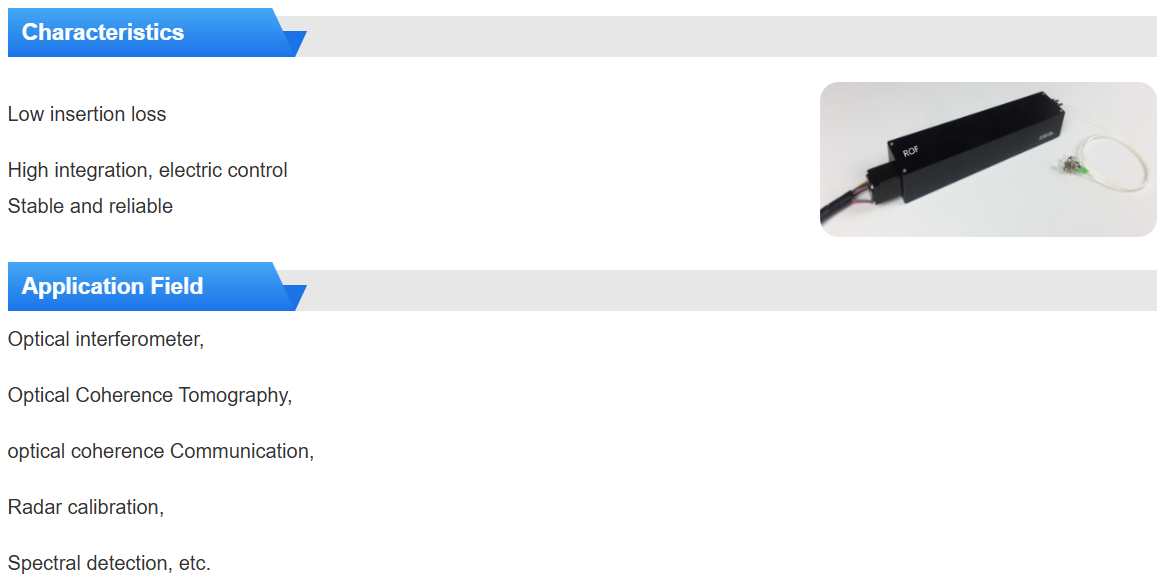Introduction to fiber optic delay line
The fiber optic delay line is a device that delays signals by utilizing the principle that optical signals propagate in optical fibers. It is composed of basic structures such as optical fibers, EO modulators and controllers. Optical fiber, as a transmission medium, transmits signals by reflecting or refracting optical signals on the inner wall, thereby achieving signal delay.
In fiber optic delay line, the main technical indicators of the input part include input signal size, dynamic range, operating frequency, bandwidth, amplitude, phase, and input standing wave ratio. The main technical indicators of the output section include operating frequency, delay time, accuracy, noise figure, loss, voltage standing wave ratio, and amplitude-phase consistency. In addition, there are some external indicators, such as working temperature, humidity, three-proof characteristics, storage temperature, interface form, power supply form, etc.
Main technical indicators
1. Operating frequency: It can cover the P/L/S/C/X/K bands.
2. Flux loss: The ratio of input signal power to output signal power. These losses are mainly limited by the quantum effects of the laser and the photodetector.
3. Delay time: The delay time is mainly determined by the length of the optical fiber.
4. Dynamic range: It is the ratio of the maximum output signal to the minimum output signal. The maximum signal power P is limited by the maximum input excitation to the laser (corresponding to 80% amplitude modulation of the saturation quantity) and the overload power of the laser.
5. Harmonic Suppression: The fundamental cause of harmonic generation is due to nonlinear loads. When current flows through a load and does not have a linear relationship with the applied voltage, a non-sinusoidal current is formed, thereby generating harmonics. Harmonic pollution poses a serious threat to power systems. Taking corresponding measures to suppress and reduce its harm is known as harmonic suppression.
Application scenarios of fiber optic delay line: Radar systems; Optical computer system Electronic countermeasure Optical fiber communication system Signal encoding and caching. Fiber optic delay line is a technology that uses optical fibers to transmit signals and delays the signals through electronic devices. In modern communication and experimental fields, electric optical fiber delay lines are widely used and play a key role in many important areas.

Post time: Aug-13-2025





